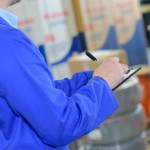Creating eye-catching label designs and selecting the correct materials for your custom labels are very important tasks to undertake. However, the application stage requires an equal amount of your attention too, if you want to create successful labels. When it comes to application, the process can be done by hand or machine. It comes with no surprise that hand-applied labels are the more economical option. However, it can be time-consuming and may even cost you more in terms of labor, especially when you have thousands of labels to apply. Machine or no machine, this really depends on your operational needs. You just need to be ready to make adjustments if either method does not work out for you. If you need help applying customized labels that you have just made, here are some useful tips to get you started:
Make Sure that the Applicable Surface is Dry Enough
On the whole, you should keep the surface dry before applying the labels. Whether it is just water or other solvents like plasticizers, petrochemicals, alcohol, or etc., these liquids can make it very difficult for your labels to adhere to your desired surface. The strength of your label’s adhesive is weakened because moisture creates a barrier that prevents the adhesive from bonding with the surface. If this happens, opt for an aggressive adhesive to overcome this.
Ensure that the Surface is Clean
Whether you are labeling an envelope, cardboard box or bottle, you need to make sure that the surfaces are clean. They do not necessarily need to be squeaky clean, but at least grease-free and/or free of dust. If the surface is clean enough, it is easier for your label’s adhesive to bond with it. If the adhesive is exposed to a larger surface area, a better adhesive bond can be created.
Use a Machine to Apply Clear Labels
The process of applying clear labels by hand can become problematic because you risk allowing more air to get trapped between the surface and the label. This in turn causes unsightly bubbles to form. If you need to work with clear labels, consider using a machine applicator. The machine will provide a smoother application and reduce the chances of bubbling.
Temperature Plays a Part in the Application Process
Temperature does play a big role in this adhesive issue. Extreme temperatures can cause application problems, especially if the label is not designed to handle freezing environments and/or surfaces. If you need to apply pressure sensitive labels, be sure to perform the application at room temperature. If you need to work in a cold environment, 50 °F or below, you might want to consider using all-temp or cold-temp adhesives. You do not want the normal adhesives to freeze and prevent the label from sticking to the surface.
Repositionable Adhesives are Beneficial for Hand Applications
If you do not have enough experience in applying labels by hand, you could end up with a crooked label. If you think you need the “extra help”, opting for repositionable labels is definitely a good idea. This type of adhesive comes with short-term removability that allows you to remove and reapply it without compromising the original adhesion. Repositionable labels come in super handy if you need to deal with mislabeled items often.
No matter which application method you choose, it is pertinent that you have a sound strategy on hand. If you are not planning to apply by hand, and prefer machines instead, make sure you are investing in the right type of machinery that best suits your operations.







